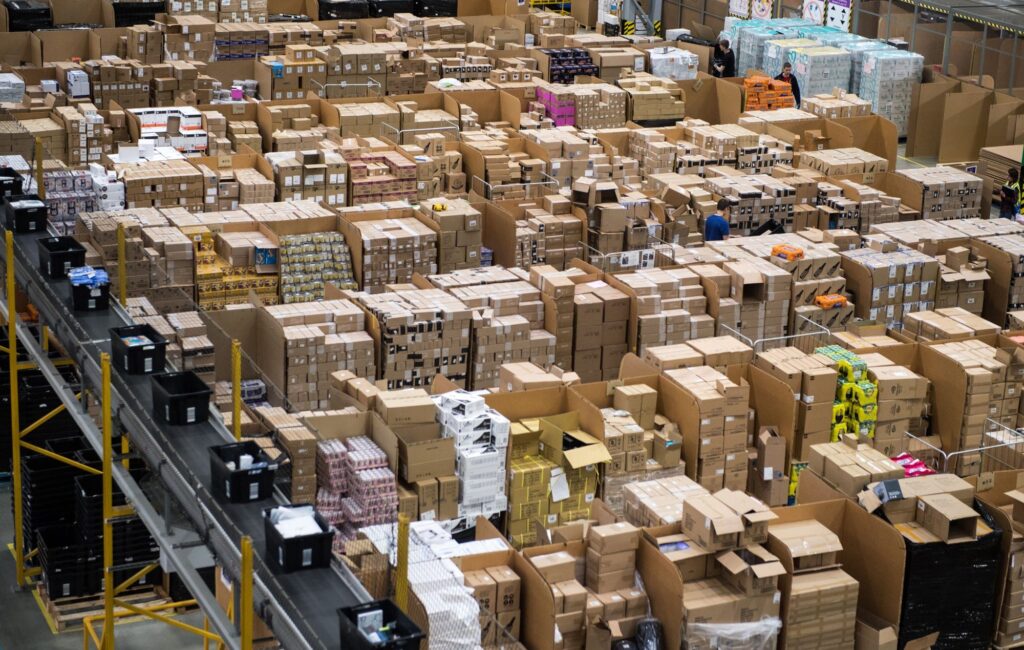Your browser is out of date, for the best web viewing experience visit Browse Happy to upgrade your browser today.

KG Ganapathi thought twice about taking Amazon’s money.
“They’re obviously the 800-pound gorilla in the space,” the logistics startup founder told Insider. “They are a leader in size and scale. They are a leader in innovation.”
Ganapathi raised a $25 millions Series A round in January from New Enterprise Associates, Wing VC, and Neotribe Ventures for his warehouse technology startup, Vimaan. Soon after, Amazon approached him with an offer to invest from its $1 billion Amazon Industrial Innovation Fund. He ultimately decided to accept the offer after thoroughly weighing the potential pros and cons.
Amazon announced the fund last month along with investments in five startups including Vimaan – all in warehouse technology, from robots to wearable tech for human workers.
Vimaan makes inventory tracking technology that uses computer vision to count products coming into a warehouse from the loading dock, and tracks every piece as it moves around and eventually leaves.
An exact inventory count with the ability to locate every piece cuts down on errors. That in turn cuts down on returns from customers who received the wrong item. And it boosts productivity since, in theory, finding the right item is faster, according to Ganapathi.
Vimaan stores the barcodes and physical specification of an item along with its location. The system also integrates with warehouse software to understand what’s coming in and point out discrepancies with the actual items received. It can even spot dented boxes and passed expiration dates, Ganapathi said.
The tech is particularly helpful for high-velocity warehouses (like ecommerce fulfillment centers) where goods come and go quickly, increasing the possibility for error, and for warehouses dealing in high-value goods. The founder said his tech is a necessary step toward so-called “lights out warehouses” that require very few or even no human workers.
“We believe their underlying computer vision technology platform is extremely innovative, differentiated, and highly relevant to solving everyday inventory management problems faced across a wide range of facilities,” said Head of the Amazon Industrial Innovation Fund Katherine Chen, in a statement announcing the investment.
Ganapathi saw the investment from Amazon as a validation of the company’s mission and technology – and a sign he may have built something Amazon had yet to build itself. But he also had concerns.
How would existing customers, which may be Amazon competitors react? Would Amazon want AWS to get involved with Vimaan? Would Amazon seek to acquire the company and then take it off the market, as it did with Kiva Robotics in 2015? Ganapathi declined to say whether Amazon is a Vimaan customer.
“We didn’t enter this thing with the intention of being acquired and I genuinely believe we’ll be able to convince our customers of that case,” he said.
Plus, the nature of Vimaan’s system protects it from some of the issues customers might have with the Amazon connection, according to the founder.
Vimaan captures so much data, it requires an on-premises server and can’t work in the cloud, which Ganapathi said is a helpful element since target customers may be Amazon competitors.
Vimaan’s tech is operating in more than a dozen warehouses as of late April.
“You can imagine that some customers would be a little bit reticent about allowing their raw data to go into an Amazon cloud,” he said. “We bypass all of those concerns because the customer’s data stays on site, partly because we engineer it that way and partly because it’s driven by the customer themselves.”
In the end he decided the benefit outweighed any potential risk.
“Amazon will make us a better company,” he said. “When you have someone that advanced, that big, they’re just going to make us better and that will serve the entire industry as a whole,” Ganapathi said.